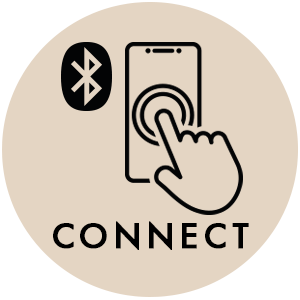Are baby hammocks safe?
At Moonboon, we work to create a safe environment for your child's sleep. After all, sleep is one of the most important building blocks in your child's growth, and therefore safety always takes first priority for us. When asked about the safety of Moonboon's hammocks, we will always provide a complete and comprehensive answer, so you can feel secure in your decision to purchase a Moonboon product. If you ask if our baby hammock is safe for use, the answer is yes – as long as the product is assembled and used in accordance with the user manual, found here.
Several scientific studies have confirmed that hammocks are safe to use as a supplementary part of your baby's sleep routine – including a randomized controlled study at Auckland University, where they tested a baby hammock. Read more here.

When it comes to babies and sleep, you as a parent will come across many different pieces of advice and opinions - baby hammocks are no exception. The information seems to vary depending on where you are looking and who you are asking, and this can make it extra difficult for you to make the right decision when purchasing new products that involve your child's sleep. Among medical professionals, there are many different opinions about safe sleep and with a lack of general regulations regarding sleep products for children, information often becomes contradictory. This can result in incorrect information, fear, and misunderstandings.
Some believe that the recommendations regarding firm mattresses and flat sleeping pads eliminate the hammock as a safe place to sleep but these concerns are not valid. The hammock from Moonboon is designed so that your baby always sleeps on their back (the safest sleeping position for a baby) and it has been proven that the slight curve and the elevated head position do not compromise the baby's upper airways and oxygen supply. Moonboon’s hammock is made from organic and breathable materials: Both the organic cotton of the baby hammock and the mattress’ kapok are breathable and made to regulate your baby’s temperature.

In Moonboon, creating a high-quality product has been a top priority since day one. This is the reason why we design, develop and test all our products in our mother country Denmark through close collaboration with Danish professionals. We have a team of experts who constantly ensure that all products are produced with the utmost responsibility.
In Europe, there are currently no safety standards when it comes to baby hammocks. The standards that have been given so far by the three officially recognized European Standardization Organizations (the European Committee for Standardization (CEN), the European Committee for Electrotechnical Standardization (CENELEC), and the European Telecommunications Standards Institute (ETSI)), only cover cribs (including cradles, suspended cribs, and bedside sleepers) for domestic and non-domestic use.

Precautions regarding your child's sleep
Always make sure your child falls asleep on the back. This is one of the safest positions for your child to fall asleep in, whether it's through the night or for just a nap. When your child can move from back to stomach, your child should never be left unsupervised while being in the baby hammock. If your child is cold and you need to cover them with a thin blanket or a duvet, make sure that the blanket/duvet is not above shoulder height and that it is firmly tucked in. The duvets from Moonboon are made of organic kapok and therefore it weighs less than an ordinary duvet and is more breathable than e.g. cotton to help regulate your child’s temperature. You should always check on your child regularly to ensure that they are not too warm, especially during warmer seasons.
Health Authorities in different countries have different recommendations about the use of duvets for babies and there is no internationally recognized guideline as to when your child can start using a duvet. Please always act in accordance with your own country’s regulations.



















